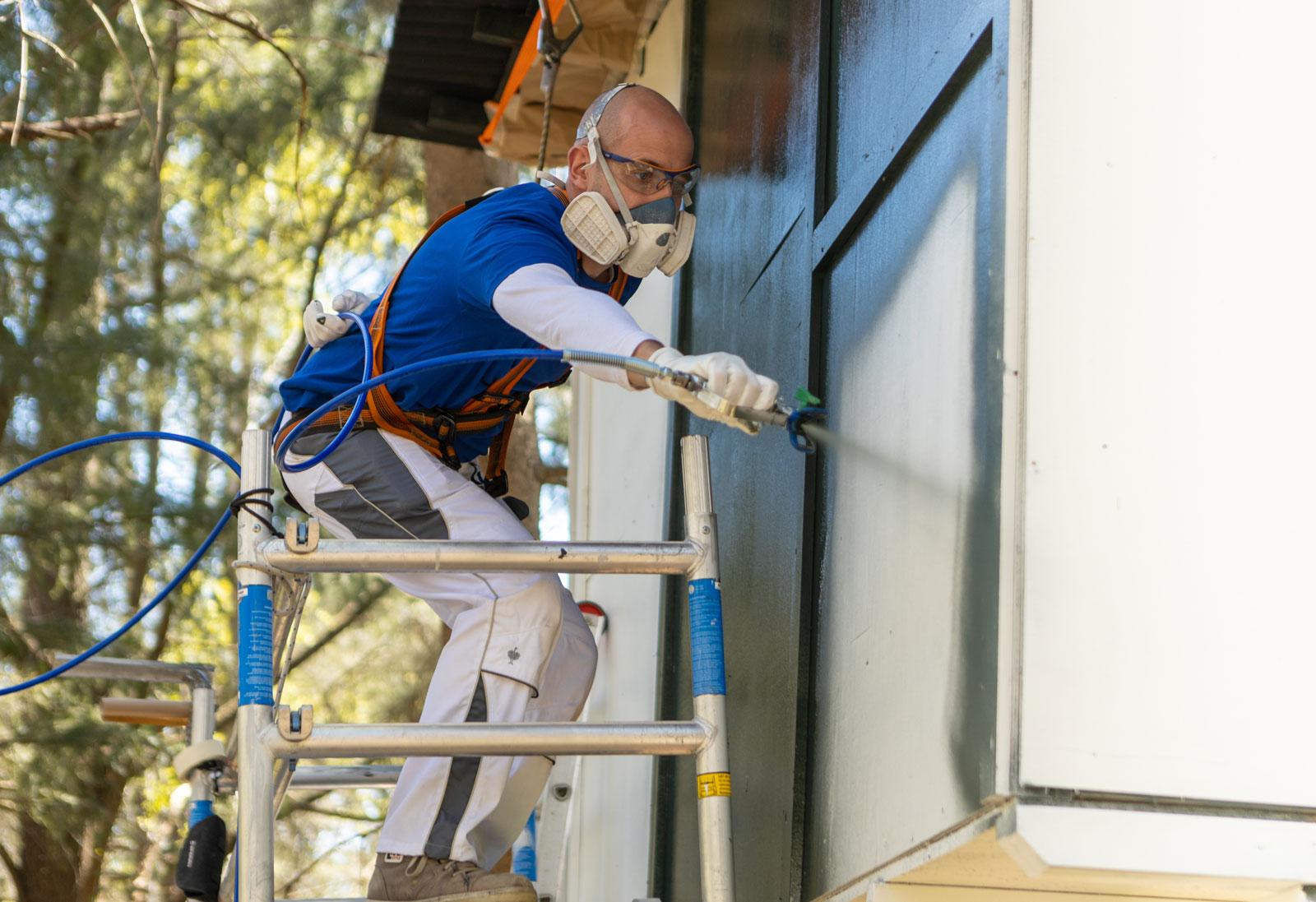In part three of our series on airless sprayers, we look at how to ensure safety at all times when using your airless equipment.
The potential hazards that may occur when using Graco products are mainly related to fire and explosions. These can only occur if there is an ignition source combined with flammable vapours and air in the workspace. Ignition sources that can potentially lead to a fire or explosion are electrical switches or motors, open flames, and static electricity.
To prevent fire and explosion ensure proper ventilation; remove or extinguish all ignition sources, such as pilot lights, cigarettes, arcing motors, and others; and ground all people, objects and spraying equipment in the spray area to prevent electrostatic discharge. It is also essential to use appropriate flushing procedures: use water, mineral spirits or lacquer thinner – never gasoline. Another safety essential is to use only grounded outlets, extension cords and fluid hoses designed for high-pressure spraying that are in good condition – do not modify or remove electrical cords.
Skin injection
Spray equipment users and doctors often underestimate the seriousness of a skin injection injury and the medical complications that could result. The injury might look like ‘just a cut’ but should be considered a serious injury.
Factors in the work environment that contribute to the risk of accidental skin injection are a high-pressure fluid stream directed toward skin or clothing; removal of protective devices from equipment (gun safety, trigger guard, and tip guard); unintended release of fluid pressure; and failure to use a spray gun trigger safety. To prevent skin injection, stay clear of high-pressure fluid streams and sprays and never remove protective devices, such as spray gun tip guards. You should also use proper pressure-relief procedures as well as proper flushing practices described in the instruction manual. Don’t try to stop leaks with your hands or body and always use the spray gun trigger safety when not spraying. Never feel for leaks with your hands or a rag.
Too much pressure
Pressure-related injuries occur when equipment is over-pressurised and a component of the airless sprayer ruptures. Component ruptures are most often caused by exceeding the safe working pressure of a component; continued use of worn or damaged equipment; or the operator fails to follow pressure-relief procedures. In addition, injuries can occur if connections are not tight, are incompatible or are inappropriate for the pressure rating.
When equipment components rupture or an unexpected pressure release occurs, injuries are most often caused by spray in the face or eyes, a whipping hose or projectiles. To prevent pressure-related injuries do not exceed the working pressure ratings (WPR) of components, paying special attention to high-pressure equipment. Use pressure-relief devices like pressure relief valves on sprayers and limit the air or hydraulic pressure to the motor so that the fluid pressure produced by the pump is less than the working pressure of all system components. It is also important that you don’t try to repair permanently coupled hoses. Also, ensure that spray tips are properly aligned to prevent back-spray. Never use damaged or worn equipment and do not use low-pressure fittings on high-pressure equipment. Lastly, check for proper connections and make sure they are tight before pressurising the system.
Injury from moving parts
Injury from moving parts most often occurs after unintended contact with moving components (for example, air motor and pump displacement rods). It can also occur if equipment guards are removed, or there is a failure to completely relieve fluid and air pressure when servicing equipment.
To prevent injury from moving parts, follow procedures for relieving fluid pressure whenever you stop equipment for service or repair. Never operate equipment with guards or other protective devices removed, and check regularly to ensure that safety devices are operating properly. Finally, properly use bleed type shutoff valves.
If you would like to know anything else about airless spraying, or discover Graco’s range of airless sprayers, contact Emmanuele Filippo – emmanuele.filippo@graco.com or at graco.com
Missed the first or second parts of this feature? Find them here

